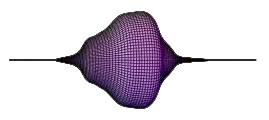Random Geometry and Random Matrices
From Quantum Gravity to Econophysics

Progress in the sciences is driven by the urge to push the limits of our understanding of the physical world. The unprecedented advances of the last century are now culminating in a collective search by theoretical physicists for the most fundamental building blocks of space, time and matter, and a unified description of their interactions. In trying to formulate a quantum theory of physics at the most extreme scales, there is mounting evidence that special, so-called non-perturbative methods are being called for. These take into account that space-time at the Planck scale is not well approximated by the fixed, flat Minkowski space which provides the setting for standard quantum field theory at much lower energies. Although numerous non-perturbative aspects of superstring theories have been uncovered in recent years, and background-independent formulations of quantum gravity are being explored, a complete and fully nonperturbative construction of these theories is still lacking. The situation is not unfamiliar from quantum chromodynamics, where powerful lattice methods have been developed over time, but where we still lack a deeper theoretical understanding of non-perturbative properties such as confinement.
A primary focus of the network ENRAGE is the further systematic development of an already existing set of non-perturbative analytic and numerical tools from the theory of discrete random geometries, and their application to some of these fundamental problems. There is a coherent body of knowledge, especially on the dynamics of lower-dimensional geometries (graphs and surfaces) and the closely related theory of random matrices, to which many of our network members have made seminal contributions. These methods are rooted in quantum field theory and the theory of critical phenomena. They are ideally suited for a non-perturbative description of quantum-gravitational and string theories, because they do not require any a priori distinguished background geometry. Pioneering advances have already been made by network members in the study of the critical behaviour of higher-dimensional random geometries.
It turns out that the very same methods are suited for the description of a much wider range of phenomena, from condensed matter physics, through the dynamics of networks, to biological systems, as well as areas of pure mathematics, and the study of such topics provides a second major focus for the network’s research. The training of young researchers in the use of these highly versatile tools - for which there is already a proven track record - will prepare them for careers not just in physics, but in biology, information technology, computer science, finance and economics. Previous EC networks involving some of the teams in the current network have witnessed a substantive amount of cross-fertilization and fruitful collaborations between experts on various methodological and applied aspects of random geometry, going far beyond the scope of any single subdiscipline of theoretical physics, and not easily accommodated within current institutional structures. The joint network activities provide our young researchers with a unique perspective stretching beyond the boundaries of their specific discipline.
ENRAGE draws in expertise on random geometry and random matrices from all over Europe and beyond, while keeping a strong scientific focus on formulating a non-perturbative description of quantum gravity and string theory using discretized random geometries and applying these methods in the study of other statistical mechanical systems and networks. The previous networks have led to the formulation of such new concepts as the Gonihedric string model, Lorentzian dynamical triangulations, new numerical algorithms for the study of random geometries and the application of quantum field theory methods to the study of networks. Building on these successes, there is every reason to expect similar advances with the current collaboration.